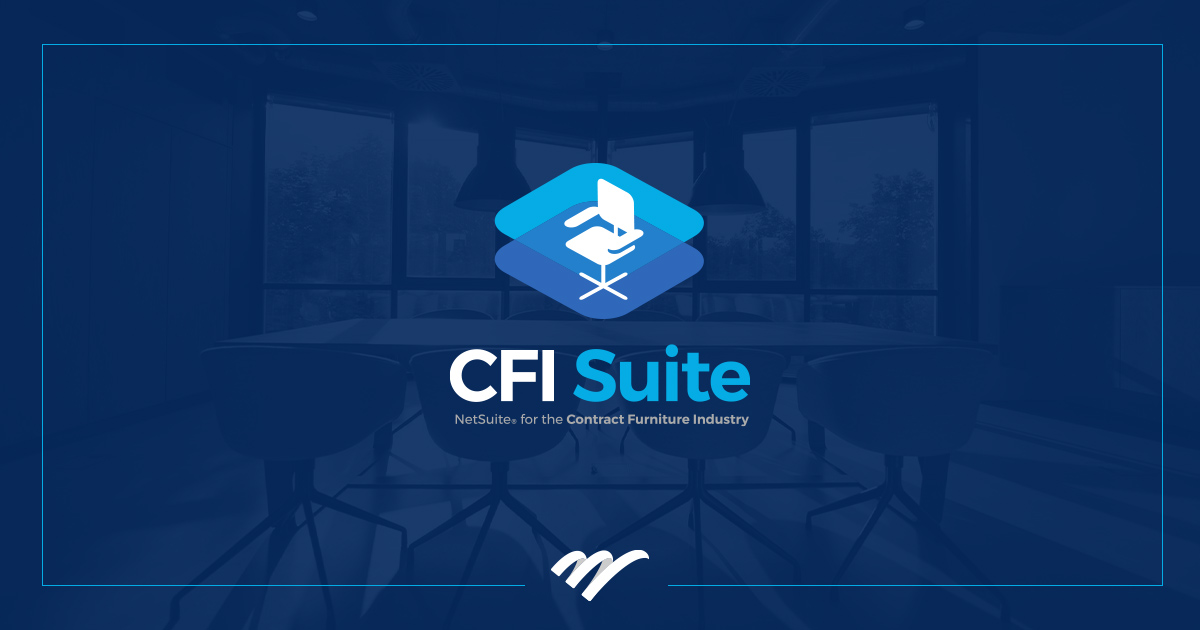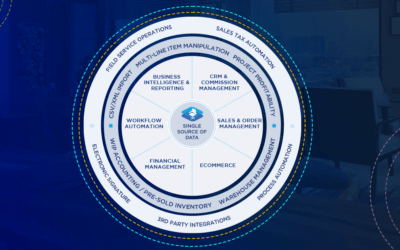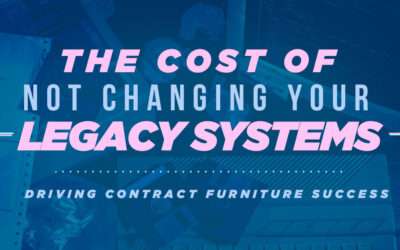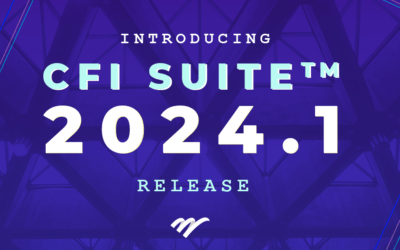A look at the key challenges that contract furniture dealer are working around in today’s business environment and how technology can help ease some or all of these pain points.
With much of the world continuing to work remotely, contract furniture companies are facing more than their fair share of challenges as they work to meet their customers’ needs while also staying viable and profitable. But even in the best of times, contract furniture companies face unique issues that are best solved by using integrated technology suites designed with their specific industry in mind.
The problem is, where many contract furniture companies are connected to their manufacturers’ systems (e.g., Herman Miller, Steelcase, and Haworth), the rest of the industry still relies on ‘80s-era technology that hasn’t kept up with the times.
Here are six ways these antiquated systems are creating corporate insomnia for contract furniture companies.
About 80-90% of all contract furniture dealerships are run by sales; they’re sales organizations. Because of this, these organizations have relatively good sales processes, but they lack a solid back-office infrastructure. They’re also highly reliant on paper, and tend to focus on boosting their sales capabilities versus expediting or streamlining their operations.
The current systems that dominate the industry are all closed, which means you can’t go in and integrate an application like DocuSign in one day. Instead, it’s an 8-month process that requires the building out of new functionality, testing, and a major financial investment—all just to put a virtual document signing process in place. This is beginning to change as more dealers embrace e-commerce, and as more systems attempt to accommodate e-commerce automation workflows. These capabilities are inherent in CFI Suite, which allows e-commerce orders to flow right into your system. This doesn’t apply to all systems; there are still many automated solutions that require companies to download and upload files.
Up until recently, many contract furniture dealers were reluctant to invest in technology because 1) there were technical barriers with the systems that they have in place and 2) because they’re saddled by the closed systems described in point #2. If they wanted to change something, it meant going back to the company that owned the computer code and the technology and asking it to tweak the system. A captive audience, these dealers just managed with the hands that they were dealt, so to speak, and wound up behind the technology curve as a result. Fortunately, between open systems like Oracle NetSuite ERP and the introduction of application programming interfaces (APIs), companies have more leeway when it comes to adding new functionalities and capabilities to their software suites.
A lot of contract furniture dealers signed up for platforms that are stuck in the ‘80s, and that haven’t kept up with the times, added new bells and whistles, or moved into the cloud. This is particularly true on the accounting side, where a single instance of QuickBooks may have been installed 10-20 years ago and then never updated or replaced. In the world of systems, if you’re still handling manual cash reconciliation in Excel, it’s time for a change. With a modern, integrated technology suite, you’ll have all of the dashboards, capabilities, and functionalities that you need to bring your accounting processes into the 21st Century. Instead of cash reconciliation taking days—or, not knowing your company’s cash balance until the end of the month—all of this (and more) will be right at your accounting manager’s or controller’s fingertips.
Managing price confirmations for customers is extremely time consuming busy work. A dealership sends a PO to a manufacturer who, in turn, enters the order into its system. The manufacturer then sends a confirmation or acknowledgement of that sales order back to the dealer. These steps were historically handled via email or through a large manufacturer’s platform, with the former contributing to a high volume of email traffic. Using CFI Suite and an integrated platform like Avanto, companies can streamline this process, drive a lot of time out of it, and reallocate team members to more important tasks.
This is another highly-manual process that can easily be automated with an integrated technology suite. That means full-time employees spend their days managing tasks like purchase order fulfillment, rather than scanning those documents (or, having them pushed directly into the technology suite). The good news here is that automation tools, warehouse management systems, and other tools can be integrated directly into Oracle NetSuite, and they all help create a timelier, more accurate WIP tracking process.

As they work through these and other challenges in 2022, contract furniture dealers can rest easier knowing that a unified, integrated technology suite can quickly eradicate these pain points and put companies much further along in their digital transformation journeys. As the business environment normalizes and as companies return to more traditional work arrangements, dealers will be well positioned to succeed and thrive in their competitive marketplace.






